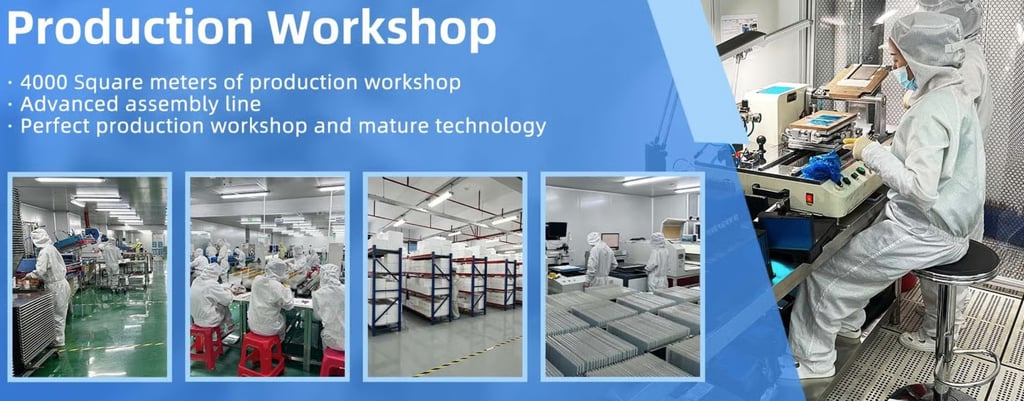Resistive vs. Capacitive Touch Screens: Which is Better for Your Needs?
When it comes to choosing a touch screen for your industrial application, two of the most common options are resistive and capacitive touch screens. Each technology has its own strengths and weaknesses, making them suitable for different use cases. In this article, we’ll compare resistive and capacitive touch screens to help you make an informed decision.
2/26/20252 min read


1. How Resistive Touch Screens Work
Resistive touch screens consist of two flexible layers coated with a resistive material and separated by a small gap. When pressure is applied, the layers make contact, and the touch point is detected.
Advantages:
Works with any input (finger, stylus, gloved hand).
Cost-effective and durable.
Suitable for harsh environments.
Disadvantages:
Lower sensitivity compared to capacitive screens.
Limited multi-touch support.
2. How Capacitive Touch Screens Work
Capacitive touch screens use a layer of capacitive material to detect touch. When a conductive object (like a finger) touches the screen, it disrupts the screen’s electrostatic field, and the touch point is registered.
Advantages:
High sensitivity and accuracy.
Supports multi-touch gestures.
Sleek and modern design.
Disadvantages:
Does not work with non-conductive inputs (e.g., gloved hands).
Generally more expensive than resistive screens.
3. Key Differences Between Resistive and Capacitive Touch Screens
FeatureResistive Touch ScreenCapacitive Touch ScreenInput MethodWorks with any inputRequires conductive inputSensitivityLower sensitivityHigh sensitivityMulti-TouchLimited supportFull multi-touch supportDurabilityHighly durableDurable but less ruggedCostCost-effectiveMore expensive
4. Which Technology is Right for Your Application?
Choose Resistive If:
Your application requires input from gloved hands or styluses.
You need a cost-effective solution for harsh environments.
Multi-touch functionality is not a priority.
Choose Capacitive If:
You need high sensitivity and multi-touch support.
Your application involves consumer-like interfaces.
Budget is not a primary concern.
5. Real-World Applications
Resistive Touch Screens:
Factory automation (e.g., control panels).
Medical devices (e.g., patient monitoring systems).
Outdoor kiosks (e.g., ticketing machines).
Capacitive Touch Screens:
Smart home devices (e.g., touch-controlled thermostats).
Industrial tablets (e.g., portable diagnostic tools).
High-end control systems (e.g., advanced machinery interfaces).
Why Choose STouch Display?
At STouch Display, we offer both resistive and capacitive touch screens to meet your specific needs. Our team can help you select the right technology for your application, ensuring optimal performance and reliability.
Conclusion
Both resistive and capacitive touch screens have their unique advantages, and the best choice depends on your application requirements. By understanding the differences between these technologies, you can make an informed decision that enhances the efficiency and usability of your system.
Still unsure which touch screen is right for you? Contact STouch Display today for expert advice and customized solutions!
Get in touch
Display Solutions
Custom touch displays for industrial and medical solutions Specific to Your Needs.
Quality First
Expert in touch panels
15 Years in Touch Solutions | Your One-Stop-Manufacturer | STOUCH © 2024. All rights reserved.
